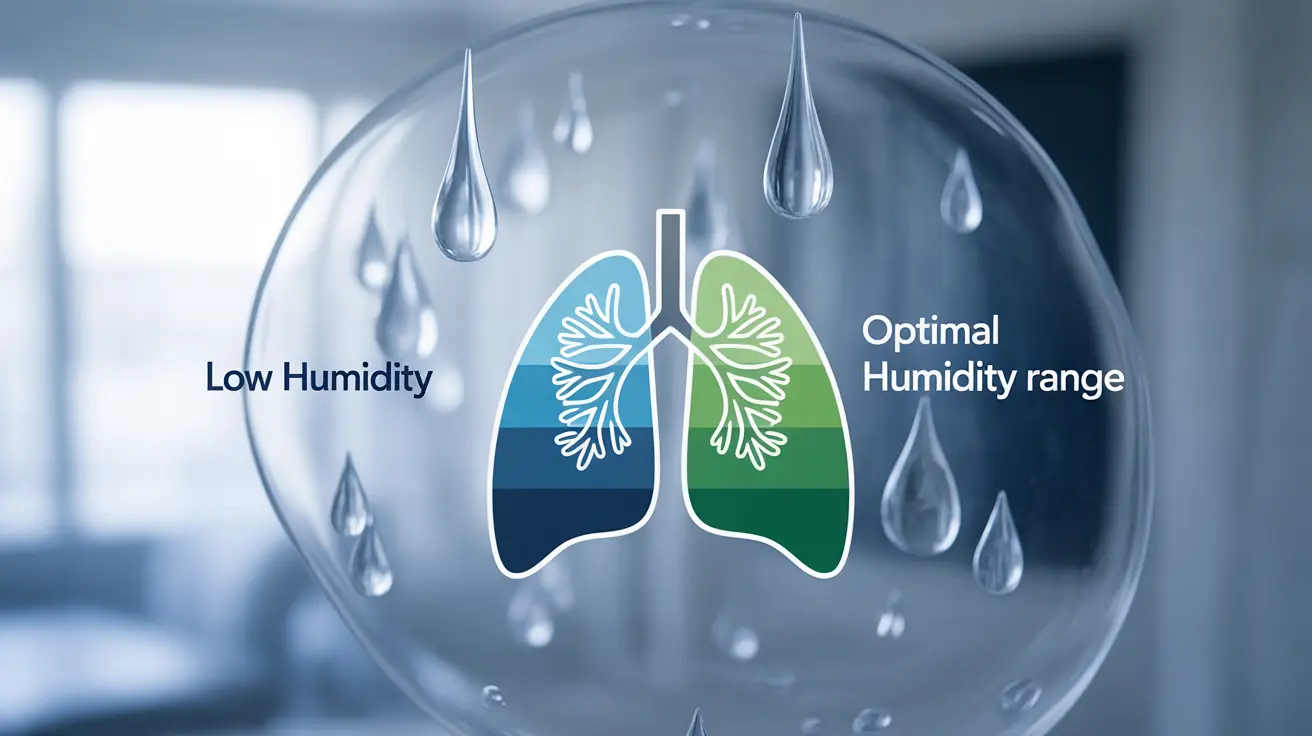For individuals living with Chronic Obstructive Pulmonary Disease (COPD), managing environmental factors like humidity can significantly impact their breathing comfort and overall health. Understanding the relationship between COPD and humidity levels is crucial for maintaining optimal respiratory function and preventing symptom flare-ups.
Whether you're dealing with humid summer weather or dry indoor heating during winter, humidity levels can either help or hinder your ability to breathe comfortably with COPD. Let's explore how different humidity levels affect COPD symptoms and what you can do to maintain an optimal environment.
How Humidity Affects COPD
Humidity plays a complex role in respiratory health, particularly for those with COPD. When humidity levels are too high or too low, breathing can become more challenging, leading to increased discomfort and potential exacerbations.
Effects of High Humidity
High humidity levels can make breathing more difficult for COPD patients in several ways:
- Increased air density making it harder to breathe
- Greater risk of mold and mildew growth
- Higher likelihood of bacterial and viral growth
- Potential for increased mucus production
- Added strain on the respiratory system
Impact of Low Humidity
Extremely dry air can also create problems for COPD patients:
- Irritation of airways and throat
- Increased risk of respiratory infections
- Thickening of mucus
- Dry, irritated nasal passages
- Greater difficulty clearing airways
Optimal Humidity Levels for COPD Management
Finding the right balance in indoor humidity is essential for COPD symptom management. The ideal indoor humidity level typically falls between 30-50%, with 40% being the sweet spot for most people with COPD.
Tools for Humidity Management
Several devices can help maintain appropriate humidity levels:
- Humidity monitors (hygrometers)
- Dehumidifiers for reducing excess moisture
- Humidifiers for adding moisture when needed
- Air conditioning systems with humidity control
- Air purifiers with humidity monitoring
Creating a COPD-Friendly Environment
Managing indoor humidity requires a comprehensive approach that goes beyond just monitoring levels. Consider implementing these strategies:
- Regular ventilation of living spaces
- Proper maintenance of HVAC systems
- Use of bathroom and kitchen exhaust fans
- Regular cleaning to prevent mold growth
- Monitoring weather forecasts for humidity changes
Frequently Asked Questions
How does humidity affect COPD symptoms like coughing and shortness of breath? Humidity affects COPD symptoms by impacting air density and moisture levels in the airways. High humidity can make breathing more laborious and increase mucus production, while very low humidity can irritate airways and thicken mucus, both potentially leading to increased coughing and shortness of breath.
What indoor humidity level is best to reduce COPD flare-ups and breathing difficulties? The optimal indoor humidity level for COPD patients is between 30-50%, with 40% being ideal. This range helps maintain comfortable breathing while preventing both excessive dryness and moisture that could trigger symptoms.
Can high humidity worsen COPD by promoting mold growth in the home? Yes, high humidity can worsen COPD by creating conditions favorable for mold growth. Mold spores can trigger respiratory symptoms and exacerbate COPD. Maintaining proper humidity levels and ensuring good ventilation helps prevent mold development.
How can people with COPD manage indoor humidity to prevent symptom worsening? People with COPD can manage indoor humidity by using humidity monitors, maintaining proper ventilation, using dehumidifiers or humidifiers as needed, running air conditioning during humid weather, and ensuring proper home maintenance to prevent moisture issues.
Why do both low and high humidity trigger COPD exacerbations and what precautions should be taken? Both extreme humidity levels affect the respiratory system differently: high humidity makes air heavier and promotes mold growth, while low humidity irritates airways and thickens mucus. Precautions include monitoring humidity levels, using appropriate humidity control devices, and avoiding exposure to extreme conditions.




